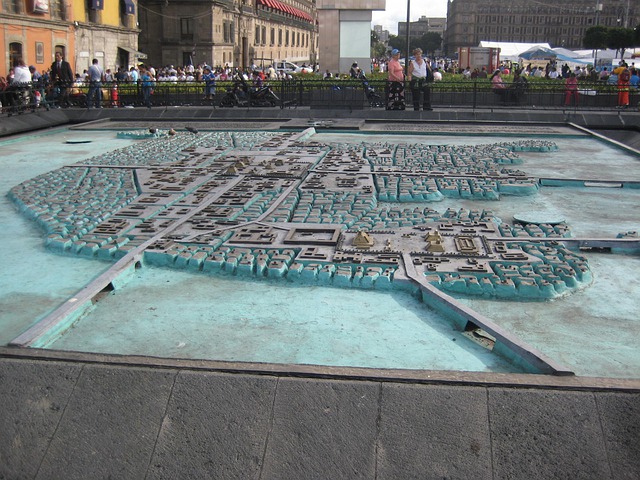
Model of Mexico-Tenochtitlan, capital of the Mexicas
The term tlatoani was used by people who spoke the Nahuatl language to refer to their governors . The concept, therefore, was used in Mesoamerica .
Chosen by the nobility
A tlatoani was a man chosen for the administration of an āltepētl (a city). This election was in the hands of the pīpiltin (the members of the nobility ), although the selected one had to descend from the first tlatoani. When the tlatoani was the leader of several āltepētl, he received the name huēy tlahtoāni .
It is important to mention that the etymology of tlatoani refers to the one who speaks : that is, an orator or someone who commands. The existence of the tlatoanis is framed in the class division that existed in those ancient societies.
The last tlatoani (or huēy tlahtoāni) of Mexico-Tenochtitlan is considered to have been Cuauhtémoc , governor between 1521 and 1525 . His successor, Tlacotzin , was named by the Spanish conquistadors and renamed Juan Velázquez .
Roles and responsibilities
The tlatoanis had religious and military responsibilities . Beyond their leadership, they were supported by other officials who had different obligations .
The cihuacóatl , with economic and political functions, was considered the most important advisor of a tlatoani. In fact, these men were also credited with the achievements of the Mexica.
In addition to leading rituals and leading the troops, the tlatoanis had to dispense justice and promote the development of public works that their community needed. Therefore, in a broad sense, it is said that these rulers had the task of working for the well-being of the inhabitants of their cities.
Cuauhtemoc
The coronation of Cuauhtémoc took place in the month of July of the year 1521, after the death of Cuitláhuac. The position he held was that of Huey Tlatoani , that is, ruler of Mexico-Tenochtitlan, Tlacopan and Texcoco (the Triple Alliance) , with direct influence in the Valley of Mexico. The etymology of this concept adds the term weyi , which can be translated as "tall, long, big", so that the meaning of Huey Tlatoani is close to "great governor."
Since the Spanish were expected to return to fight the Mexica, the tlatoani Cuauhtémoc was in charge of reorganizing his fighters, restoring his city and preparing it to face potential attacks . In order to create new alliances, he ordered various ambassadors to visit all the towns and decided to reduce or even eliminate their contributions. Indeed, the Spanish decided to return, and they did so the year after their expulsion, but this time with an army of native allies that exceeded one hundred thousand people.

Hernán Cortés, Spanish conquistador who ordered the capture of the last tlatoani
Many of them belonged to the Tlaxcalteca people, a community that had its settlements in the current state of Tlaxcala and that had been at enmity with the Mexica since time immemorial. Cuauhtémoc was captured in Tlatelolco by the Spanish army on August 13 of that same year, after Tenochtitlán had been besieged for three months, all under the orders of Hernán Cortés . According to the story of Bernal Díaz del Castillo , the act took place while the tlatoani was trying to flee together with his family and his more confident soldiers in a canoe: the Spanish pilot García Holguín caught up with them in a brig (a two-masted ship and square candles).
After his capture, Cuauhtémoc demanded to be allowed to speak with "Malinche", the name the Mexica gave to Cortés. When he was in front of him, he pointed to his dagger to ask him to kill him with it, arguing that he did not deserve life for not having been able to protect his people . This is what the conqueror himself related in one of his letters to Charles I.
